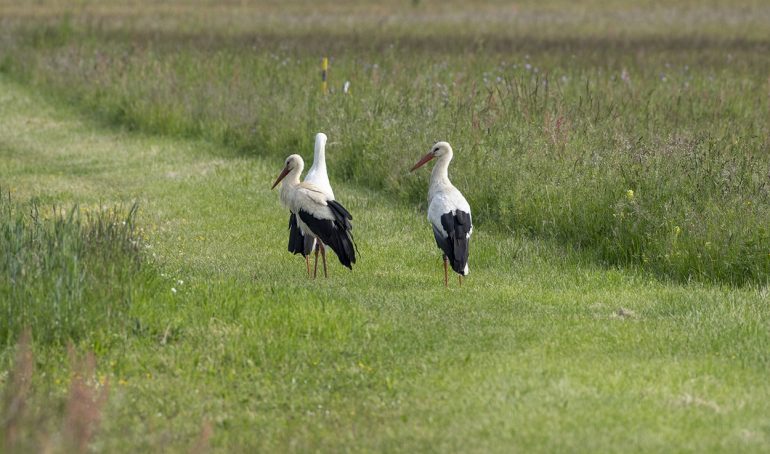The keen eyes of an eagle, the extraordinary hearing of an owl – birds’ senses are perfectly adapted to find their food. Now, an experiment has shown that storks use another purpose for this: they can smell freshly cut grasslands and thus areas where they can catch frogs or small rodents particularly well. Can get. In general, the sense of smell for birds may play a greater role than previously thought.
It’s a familiar picture to Lake Constance farmers: storks often appear next to tractors as they begin to cut their meadows. White storks live in the moist areas around the lake and feed on snails, frogs and small rodents that find shelter in the high grasslands. If these grasslands are cut down, small animals are easy prey.
What role does the sense of smell play?
How storks detect where a meadow is currently being cut is not yet clear. Because it was believed that birds mainly rely on their eyes and ears. But with these senses, it is often difficult to locate freshly cut grasslands. But then how? A research team led by Martin Wikelski from the Max Planck Institute for Animal Behavior in Radolfzell got to the bottom of the question. “My guess was that storks react to the strong smell of freshly cut grass,” says co-author Jonathan Williams of the Max Planck Institute for Chemistry in Mainz. The specific odor is produced by the so-called green leaf aroma and consists of only three different molecules. Therefore it can be inferred that storks can smell them.
Storks have prerequisites for this: “It was believed that birds could not smell good because they did not have real noses,” Wikelski explains. “Their brain has a very large olfactory bulb with many receptor molecules for scent.” The team investigated whether the sense of smell actually drives storks to freshly cut grass. Sensors from tagged animals were observed. “First we had to rule out that storks could hear the tractor or see the mowing process,” Wikelski says.
Therefore, the researchers only included storks in their observations that were more than 600 meters away from the meadow and had no direct visual contact. He also ensured that storks were not exposed to the process of mowing through conspiracies or the behavior of other birds.
Always follow the smell of the leaves
And indeed: observations confirmed that storks’ sense of smell leads them to the source of their food. It was shown that when mowing began, only those storks flew into the meadow, positioned downward in a downdraft cone of about 75 degrees – even from long distances. “There were storks that flew over 25 kilometers from the other side of Lake Constance to the cut grasslands,” Wikelski says. However, the conspirators, who were in the direction of the wind and therefore could not perceive the smell of grass, did not respond.
To make sure that the smell of cut grass alone attracted storks, the scientists then switched to a grass that had been cut two weeks earlier. “The grass was still very small in this meadow. That is why there is no interest for storks to bait, ”explains Wikelsky. To deceive the birds, however, the team distributed grass on this meadow, which had recently been cut to another, more distant meadow. After a while the first stork took off again – clearly attracted by the smell. In a previous test, Wikelski and his colleagues mixed a solution with leaf scent and sprayed it on another test meadow. The result: this meadow with an artificially planted aromatic cocktail also attracted storks from the area.
“This proves that storks find food grounds through smell in the air,” Williams says. This finding contradicts the previous notion that birds primarily use their eyes and ears to forage. Researchers suspect that the sense of smell may also play a greater role than previously thought when other bird species search for food. For example, birds of prey such as buzzards and red kites, which are regularly seen on freshly cut grasslands.
Source: Max Planck Society, Article: Scientific Reports, doi:10.1038/s41598-021-92073-7

Web guru. Amateur thinker. Unapologetic problem solver. Zombie expert. Hipster-friendly travel geek. Social mediaholic.





